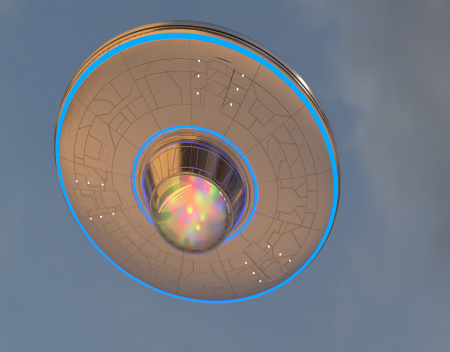Blog Categories
- African Incidents
- Atlantis Incidents
- Australian Incidents
- Belgian Incidents
- Bermuda Triangle Incidents
- Brazilian Incidents
- Canadian Incidents
- Chinese Incidents
- European Incidents
- France Incidents
- Ghosts
- Giants
- Italy Incidents
- Japanese Incidents
- Middle East Incidents
- Portugal Incidents
- Project Serpo
- Puerto Rico Incidents
- Russian Incidents
- Sasquatch
- Scandinavia Incidents
- Spanish Incidents
- UFOs
- United Kingdom Incidents
- United States Incidents
1950: Britains first flying saucer

The year is 1950, the place, RAF Tangmere, England. A Gloster Meteor at RAF Tangmere passes a flying saucer lit up with lights. This was described as 'Britain's first flying saucer'. The object was reported to be shining, revolving, and disc-like at 20,000 feet at 14.30, flying eastwards over the Portsmouth area. RAF Tangmere asked the radar station at RAF Wartling in Sussex if it had seen the object, and it had on its PPI screen. It led to the setting up of the Flying Saucer Working Party.
On June 1st, 1950, at about 14:30 hours, the pilot of a Meteor reported while flying at 20,000 feet on an easterly course over the Portsmouth area. The pilot had sighted an object travelling at very high speed on a reciprocal course, 1,000 to 2,000 feet above him and roughly 1,200 yards to starboard. The pilot described the object as circular, and of bright metallic appearance. The pilot could not give any real estimate of its speed, but thought it might be about 800 knots. He had observed it for about 15 seconds, during which period he had looked away to port and back, having no difficulty in picking up the object again. RAF Tangmere made inquiries of the radar station at Wartling, and was informed that, at about the same time as the pilot's report, the Duty Controller and three radar operators had observed an unusual response on the P.P.I., which appeared to be due to a target moving at 1,300 to 1,650 knots, first approaching and then receding from the station. The Controller stated that the response "looked to be very thick, leaving more afterglow than a usual response behind." The operator, observing on a separate display, said that it was "slim, short and weaker than aircraft," and that a series of "shadows" appeared in the space between successive points. As the receding course of the radar target could have tallied with the course of the object reported by the Meteor pilot, all the people concerned were interviewed by a member of the Research Branch, Fighter Command, from whose report the above data have been taken.
It was established that there was in fact a discrepancy of ten minutes between the times of the two reports, which were estimated as individually accurate to ± 1 minute. It must therefore be concluded that there was no connection between the unusual P.P.I. response and the pilot's visual observation. We believe that the radar response can be very simply explained as due to interference from another transmitter, a phenomenon which has been frequently observed. It is impossible to be entirely definite about the pilot's report. Assuming that he was not merely the victim of an optical illusion, the most probable explanation, which is borne out by his description of the object as "circular," implying a spherical body, is that he saw a meteorological balloon and greatly over-estimated its speed. We can find no reason whatever for adopting any less simple hypothesis.
This would be a great incident with a trained military pilot with on the ground radar confirmation but for the fact that there is no names that I could find with any of the involved parties. The official explanation of the incident is laughable at best. The old explain it away using any means possible applies here.
Resources: website: - martinshough.com

The year is 1950, the place, RAF Tangmere, England. A Gloster Meteor at RAF Tangmere passes a flying saucer lit up with lights. This was described as 'Britain's first flying saucer'. The object was reported to be shining, revolving, and disc-like at 20,000 feet at 14.30, flying eastwards over the Portsmouth area. RAF Tangmere asked the radar station at RAF Wartling in Sussex if it had seen the object, and it had on its PPI screen. It led to the setting up of the Flying Saucer Working Party.
On June 1st, 1950, at about 14:30 hours, the pilot of a Meteor reported while flying at 20,000 feet on an easterly course over the Portsmouth area. The pilot had sighted an object travelling at very high speed on a reciprocal course, 1,000 to 2,000 feet above him and roughly 1,200 yards to starboard. The pilot described the object as circular, and of bright metallic appearance. The pilot could not give any real estimate of its speed, but thought it might be about 800 knots. He had observed it for about 15 seconds, during which period he had looked away to port and back, having no difficulty in picking up the object again. RAF Tangmere made inquiries of the radar station at Wartling, and was informed that, at about the same time as the pilot's report, the Duty Controller and three radar operators had observed an unusual response on the P.P.I., which appeared to be due to a target moving at 1,300 to 1,650 knots, first approaching and then receding from the station. The Controller stated that the response "looked to be very thick, leaving more afterglow than a usual response behind." The operator, observing on a separate display, said that it was "slim, short and weaker than aircraft," and that a series of "shadows" appeared in the space between successive points. As the receding course of the radar target could have tallied with the course of the object reported by the Meteor pilot, all the people concerned were interviewed by a member of the Research Branch, Fighter Command, from whose report the above data have been taken.
It was established that there was in fact a discrepancy of ten minutes between the times of the two reports, which were estimated as individually accurate to ± 1 minute. It must therefore be concluded that there was no connection between the unusual P.P.I. response and the pilot's visual observation. We believe that the radar response can be very simply explained as due to interference from another transmitter, a phenomenon which has been frequently observed. It is impossible to be entirely definite about the pilot's report. Assuming that he was not merely the victim of an optical illusion, the most probable explanation, which is borne out by his description of the object as "circular," implying a spherical body, is that he saw a meteorological balloon and greatly over-estimated its speed. We can find no reason whatever for adopting any less simple hypothesis.
This would be a great incident with a trained military pilot with on the ground radar confirmation but for the fact that there is no names that I could find with any of the involved parties. The official explanation of the incident is laughable at best. The old explain it away using any means possible applies here.
Resources: website: - martinshough.com

